Day 1 – Paro airport
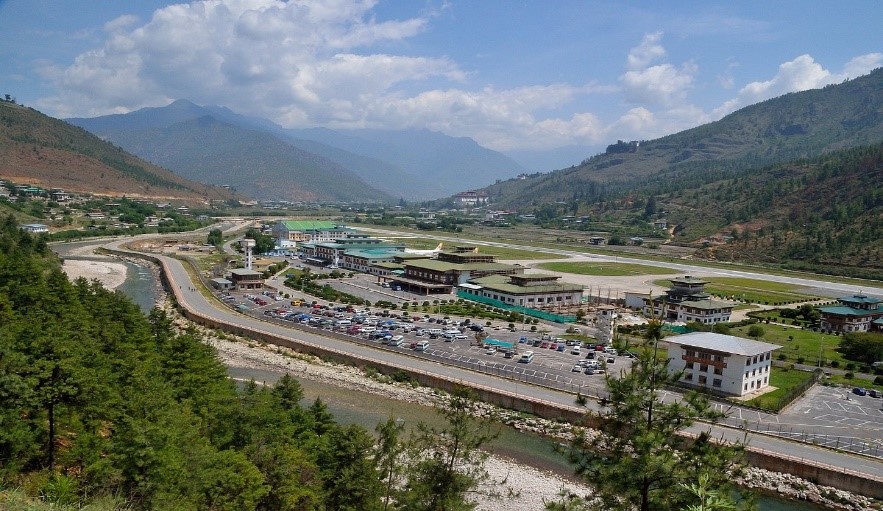
Arrival in Paro international airport. Welcome to the land of happiness, also known as Druk Yul (country of the Drukpa Lineage, the Dragon People, or the Land of the Thunder Dragon.) Upon arrival at the Paro International Airport, you will be greeted in our traditional style by our guide and driver, who will be accompany you throughout the tour.
You will then be dropped to your hotel and rest. From the next day, you will be starting your Motorcycling tour with Mr. Peter.
Day 2 – Paro – Chelela Pass – Haa
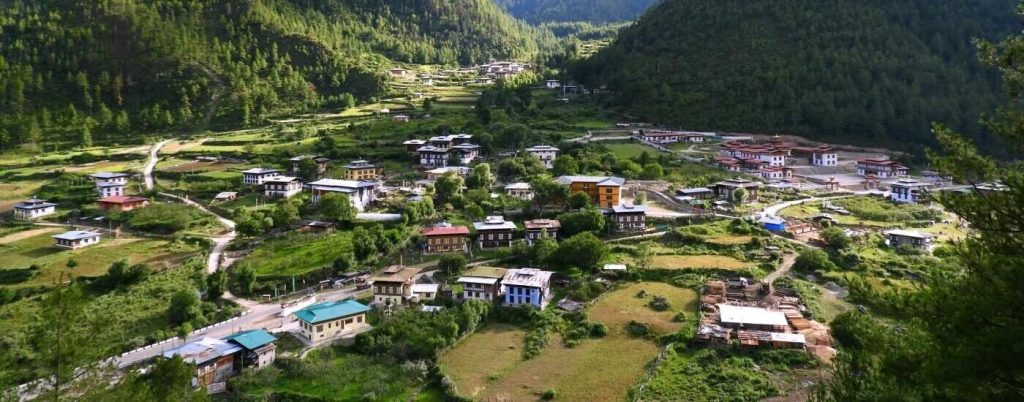
Today we will drive towards Haa valley (2,600m). On the way, you will need to cross one of the highest pass of Paro, which is called, “Chele la” pass. Elevation 3,988m. Hotel to Chele la pass will be 46km approximately. Stop there for a while and take photos of how majestic the view of the mountains and the Paro valley is.
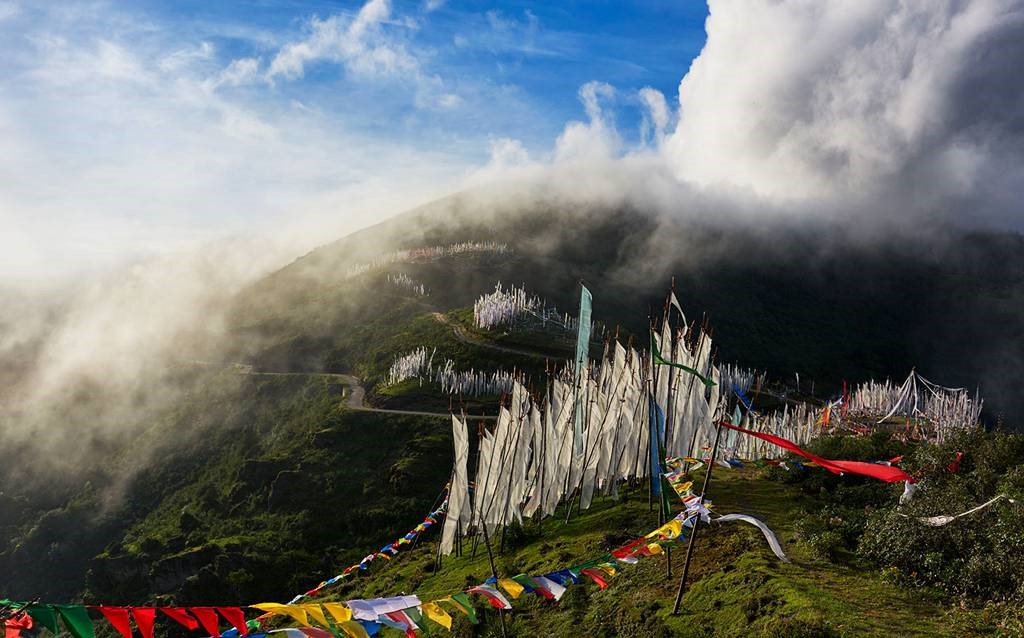
Then you will descend down towards Haa valley (25km). Once you reach Haa, you will start with the sightseeing at Lhakhang Karpo. The history of Lhakhang Karpo can be traced back to the 7th century A.D. when it was constructed in Haa coinciding with the rule of King Songtsen Gampo in Tibet during this era.
The King was actively involved in spreading Buddhism. As atonement for a sin, King Songtsen Gampo took upon himself the task of constructing 108 temples in all the countries of the Dzambudvipa. Among these constructions besides Kichu lhakhang of Paro and Jampa lhakhang of Bumthang is said to have included the other two important temples in Haa, the Lhakhang Karpo (white temple) and Lhakhang Nagpo (Black temple).
Lhakhang Karpo according to legend derives its name from the white pigeon, which landed on the site of the temple. History has it that a black and while pigeon were released to select the sites to build the temple and it was believed that the white pigeon landed on the foothills of mountain Chenrezig (Avaloeteshvara), one of the towering mountains. Lhakhang Karpo was built on the site as selected by the white pigeon.
Lhakhang Nagpo the Lhakhang Nagpo is situated a kilometer away from Lhakhang Karpo in Dumcho village in Haa valley. The black pigeon had landed a little to the North of Lhakang Karpo indicating the destined site of the present Lhakhang Nagpo. The temple was named Lhakhang Nagpo (black temple) as it was built on the site where the black pigeon had landed. The Lhakang is built on a lake. An opening in the floor of the temple provides an access to the lake underneath the temple. The Black temple owing to its name is black in color and is built amid the tranquil lush green forest.
These two temples stand as the guardians keeping watch over the valley.
Wangchulo Dzong (Haa Dzong) The fortress was built in 1915. It is considered one of the new dzong built in the country. Unlike any other dzong in Bhutan, Wangchuk lo dzong is uniquely seated on the Valley floor with Meri Phunsum Mountain at the backdrop. The dzong is located inside IMTRAT Compound. Today the Dzong serves as the headquarter office to Indian Military Training Team (IMTRAT).
Later you will ride back from the same route and rest in the hotel. Total distance from Haa to Hotel is 70km.
Day 3 – Paro – Thimphu
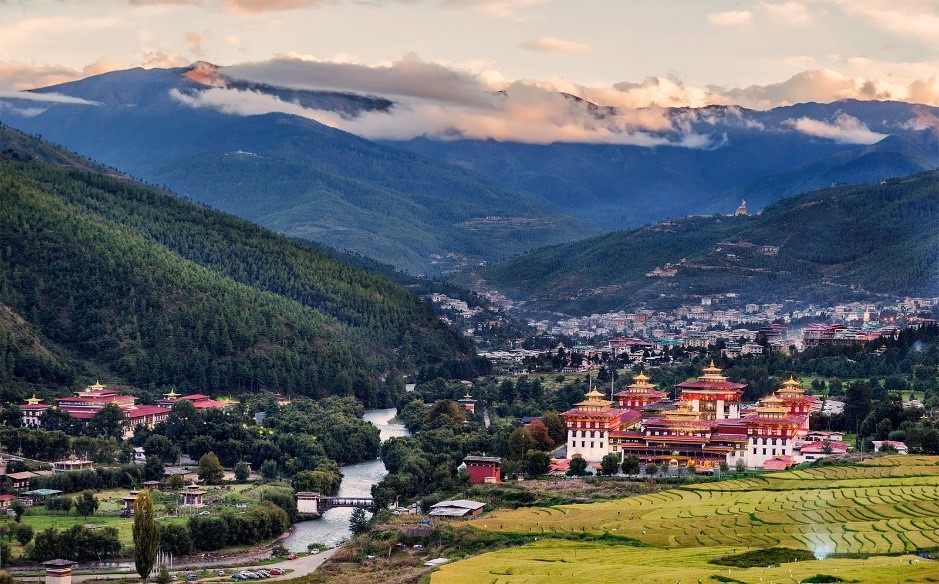
Today you will drive towards the capital city “Thimphu” (61km). Elevation 2334m.
Once you reach the capital, you will then ride towards the famous Buddha Point sitting at the elevation of 2655m.
The Buddha Dordenma is the largest sitting statue of the Buddha yetasuring in at measuring 51.5 meters in height and made of solid bronze. Inside the Buddha are 125,000 smaller Buddha statues, 25,000 12 inch statues and 100,000 8 inch statues. Tourists often drive once to see it as its view is without a doubt outstanding as the giant Buddha although large is not opposing but rather has a calm and assuring look.
Then you will ride towards Takin Preservation Centre (located in the Mothitang district of Thimphu, Bhutan is a wildlife reserve area for takin (Budorcas taxicolor), the national animal of Bhutan.)
Then ride towards the fortress known as Tashichho Dzong.
Tashichho Dzong, ‘Fortress of the Glorious Religion’ or ‘Fortress of Auspicious Doctrine’, or popularly known as Thimphu Dzong, is an impressive structure that houses the throne room and offices of the king, the secretariat and the ministries of home affairs and finance. Other government offices are housed in the buildings nearby Tashichho Dzong. It’s been the seat of the Royal Government of Bhutan since 1962 after the capital moved to Thimphu from Punakha.
Lunch will be at Folk Heritage. The Folk Heritage Museum dedicates itself to connecting people with the rich Bhutanese Folk heritage and rural history through exhibits, demonstrations, educational programs and documentation of Bhutanese rural life. The Museum will strive to disseminate the rich cultural heritage across generations by preserving it in different forms.
After lunch, your ride towards Mandrelgang starts. On the way, you will be stopping at your first mountain pass at the elevation 3100m, which is called, “Dochula Pass”. Once you reach, you will stop for a short tea break and a short sightseeing around the area. Places you will be sightseeing are The 108 Druk Wangyal Khang Zhang Chortens of Dochula Pass were built under the patronage of the eldest Queen Mother, Queen Ashi Dorji Wangmo Wangchuk, to honor the Bhutanese soldiers who died in December, 2003 battling Assamese insurgents from India, and Druk Wangyal Temple right above the 108 stupas. Then you will descend down towards the Mandrelgang home stay.

Day 4 – Mandrelgang – Punakha
Today morning, you will have a good set of breakfast since you will be going on a bit longer and amazing journey towards the northern side of Punakha. The elevation in Punakha will be 1,242m.
The ride from home stay towards Punakha will be around 21km.
Once you reach Punakha, you will do a quick visit at the amazing fortress Punakha Dzong (also known as Punthang Dechenphodrang, Legend says that Zhabdrung made the carpenter trulpizow balep made to sleep in chamber and he had been taken to paradise /zangtopelri of Guru Rinpoche and he got at the sketch and the model of the dzong.)
Then visit the one of the longest suspension bridge in Bhutan. Punakha Suspension Bridge is the longest suspension bridge in Bhutan measuring 180 m in length. From the bridge, you can get a spectacular view of the Po Chhu River (Male River) and the valley. It’s an ideal place for a photo-shoot with a stunning background. You will definitely enjoy the cool and breezy vibes from the suspension bridge.
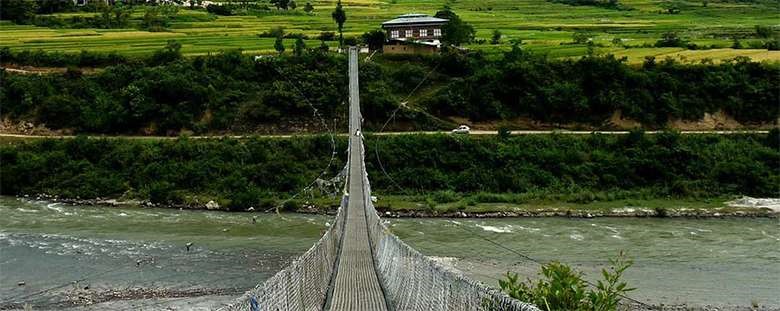
Day 5 – Mandrelgang – Gasa
Today morning, you will have a good set of breakfast since you will be going on a bit longer and amazing journey towards the northern side of Punakha. The elevation in Punakha will be 1,242m and Gasa will be 2,850m. The ride from home stay towards Gasa will be 79km, which will approximately take 2 hours 43 minutes.
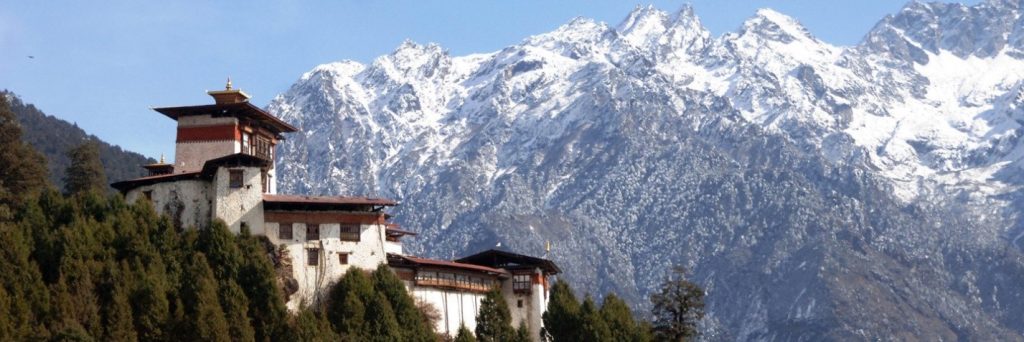
Once you reach Gasa, you will first visit the beautiful Gasa Fortress which is elevated at 2,850m. The Dzong was said have built by Zhabdrung Nawang Namgyal (Founder of Bhutan) in 1640s above the cave meditated by a Tibetan saint Terkhungpa. It has a great historical, cultural and spiritual significance. Just below is the “la Tsho” literally meaning soul-lake. The lake is an important part of the history of the Dzong. Local belief has it that Gomo, the guardian of the Dzong emerged from this lake in the form a snake and held bound the Dzong when Tibetans attacked the Dzong with fire arms in the 16th century.
Later you will visit the great and famous hot spring of Gasa. The hot springs at Gasa are situated close to the banks of the Mo Chhu River. This is one of the most popular springs in the country and are frequently visited not only with tourists but with local people as well.
There are five bath houses at the Gasa Tshechu for general public and reserved one for Royals. Out of five general bath houses, one of the bath house is “pay and use” where visitors can book in advance. The water temperature varies in each of the pool with different medicinal value, so visitors can choose the one according to their choices. Bathing facilities have also been provided to ensure that the Hot Springs remain clean and hygienic. There is also an outdoor pool.
Later you will drive back from the same road towards the Mandrelgang homestay and rest for the next day’s journey towards Gangtey/Phobjikha.
Day 6 – Mandrelgang – Phobjikha

Today you will ride towards the most beautiful place in Bhutan, “Phobjikha valley” its elevation is 3,000m.
Riding distance from Mandrelgang to Phobjikha valley will be 72km. It’s a place for winter residence of the endangered Black Necked Cranes, who fly down from the Tibetan plateau and stay throughout the winter at the valley.
Before that, you will first visit the famous Wangdue Phodrang Fortress.
Wangdue Phodrang Dzong overlooks the convergence of the Dangchhu and Punatsangchhu. When Zhabdrung Ngawang Namgyel was in Chimi Lhakhang at Punakha, an old cripple approached him and told him that if he built a dzong in Wangdue Phodrang on a ridge that resembled a sleeping elephant, he would unite the country. Zhabdrung concluded that the old man was Yeshey Goenpo (Mahakala) and sent a noble to study the location. The noble reported that he saw four ravens circling the ridge, which flew away in four different directions when he approached. Taking this to be a good omen, Zhabdrung constructed the dzong in 1638.
On the way, before reaching the Fortress, you will visit the famous Rinchengang Village – This village is a small bunched village in front of the Wangdue Dzong and is famous for its proficiency in traditional means of stonework. While Rinchengang is believed to be one of the oldest villages in Bhutan, Rinchengang village is worth a visit. Rinchengang village is located opposite to the Wangdue Phodrang Dzong and Punatsangchhu runs along the highway. The topography of the village attributes to the attraction. The array of traditional houses clustered neatly on a tiny hillock overlooks the imposing Wangdue Phodrang Dzong. If you wish to visit the village, it takes around 20 mins to walk uphill from the Thimphu-Wangdi highway.
Have lunch at a Nobgang in a local traditional restaurant on the way to Gangtey.
Once you reach, you will visit Gangtey Monastery. Generally known as Gangtey Goenpo or Gangtey Monastery, is an important monastery of Nyingmapa school of Buddhism built in 17th century.)
Then you can ride to your hotel, check in, rest for a while and later do a 1 hour Nature Trail walk around the Phobjikha valley. For a special treat, you can sock in the hot stone bath, please inform your guide in advance for pre booking since it will take 3 – 4 hours to prepare the bath.
Day 7 – Phobjikha (Rest day and explore) – Trongsa
Today after having breakfast, from soaking in the peace and tranquility of the valley, you can partake in a short hikes around Phobjikha valley with trails ranging from easy to difficult. From walking through pine forests, temples and villages laden with prayer flags, hikers can even interact with the locals if they so choose to. Also, the various bird species along the trails make it ideal for bird watchers and photography enthusiasts.
Then you will visit The Black Necked Crane Center. It is information centre for the Rare Black necked cranes set up by the Royal Government of Bhutan. The center is stocked with books and pamphlets on these rare migratory birds, their habitats and their conservation efforts by the Government. They also sell handicrafts and craft works made of Bamboos produced by the local people.
After lunch, you will start off your journey towards Trongsa district. From Phobjikha valley till Trongsa it will take 82km.
On the way, you will stop for a short sightseeing at Chendebji Chorten (Stupa) also called the chorten charo Kasho is enroute to Trongsa and is patterned after Kathmandu’s Swayambhunath Stupa, with eyes painted at the four cardinal points. It was built in the 18th Century by Lama Shida from Tibet, to cover the remains of an evil spirit that was subdued at this spot. It is located 41 km west of Trongsa and 45 minutes from the top of the Pele La pass in Bhutan at 2411 meters elevation. It is favorite spot to lunch for both tourists and local
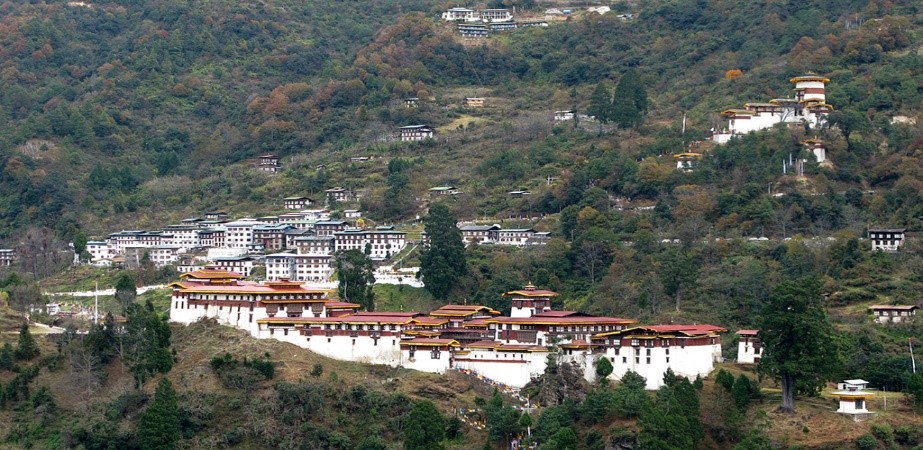
After reaching Trongsa, check in, change and rest. Later you can stroll around the small town and enjoy the beautiful sceneries of Trongsa.
Day 8 – Trongsa – Paro.
Today will be the longest and most amazing ride. Start off early in the morning so that you will have plenty of time to take photos on the way, tea and lunch breaks etc. Before riding you will first visit the famous and the biggest fortress in Bhutan. Trongsa Dzong (elevation 2,170), historically, Trongsa is one of the most important Dzongkhag. Trongsa Dzong had been the head quarter for eastern region and has been the seat of Trongsa Penlop. Even today, the formal investiture of the crown Prince of Bhutan as the Trongsa Penlop is observed in this Dzong.
Then you will start off with your journey. You will be riding from Trongsa till Paro, crossing two highest mountain passes (Pele la pass and Dochula Pass).
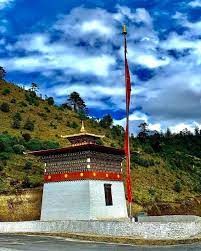
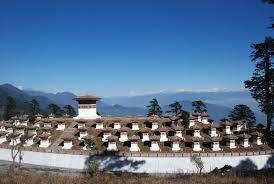
Remember to take it easy and enjoy the ride with the beautiful sceneries of the Himalayan mountain peaks.
Today’s total distance will be 6 hours journey. (226km)
Later check in your hotel, rest for a while and go for a stroll around the town. You can even go for the famous hot stone bath in the evening side to relax your muscle and rejuvenate yourself from all the rides around Bhutan.
Day 9 – Departure from Bhutan
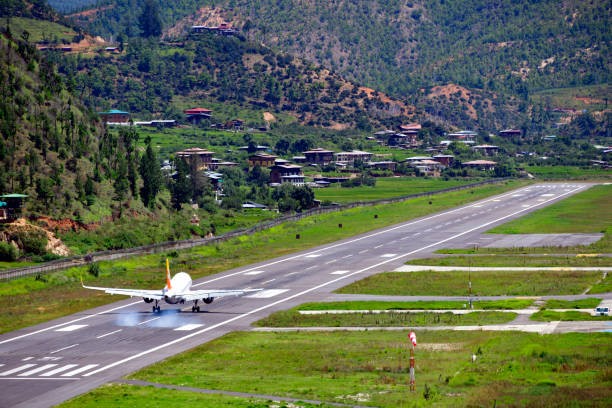
Today, our guide and driver will bid farewell to you all. Please have a pleasant flight back home. We will be looking forward to seeing you again in future for another place to tour around. Thank You & Tashi Delek!